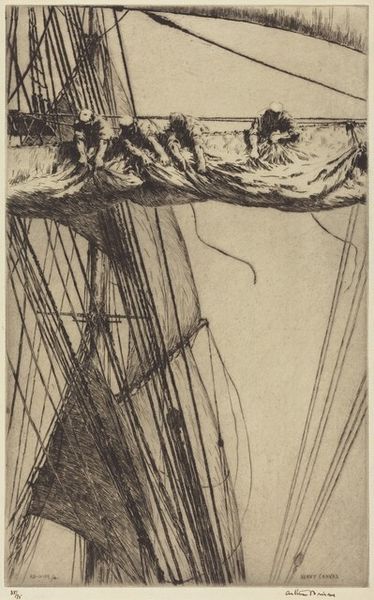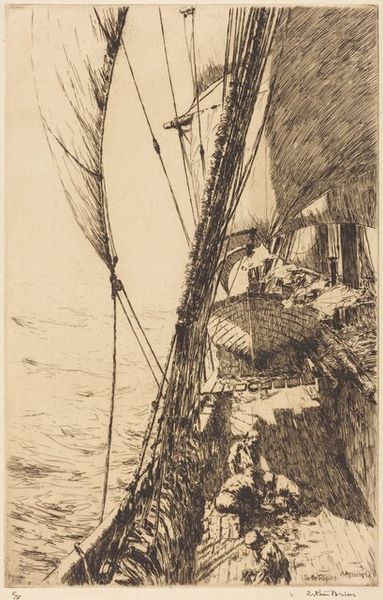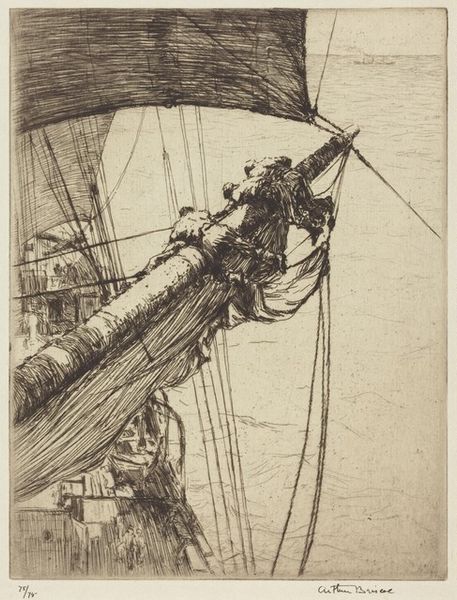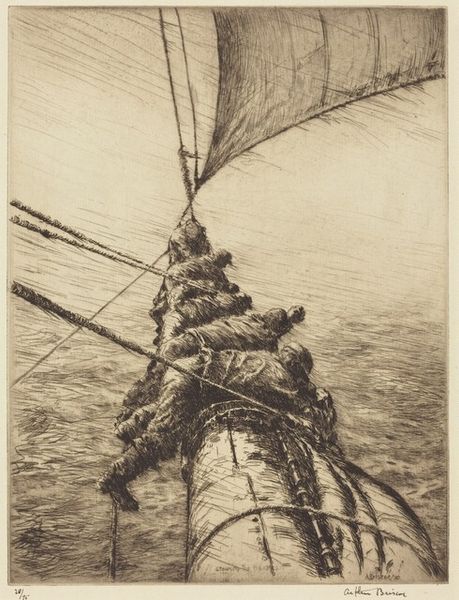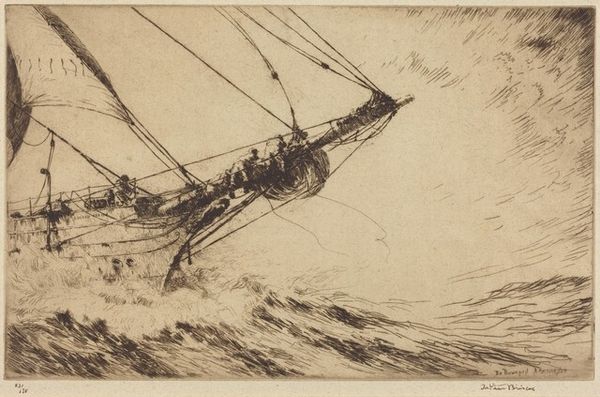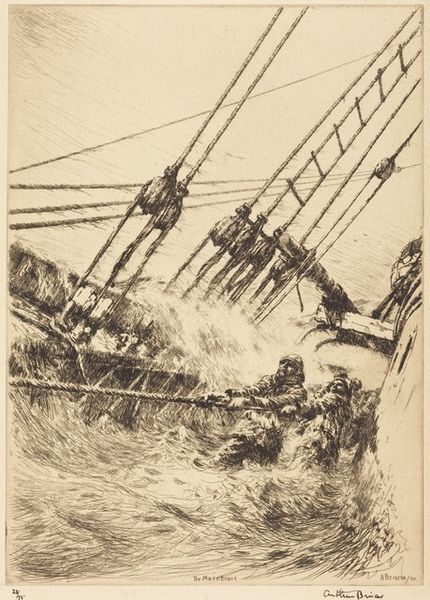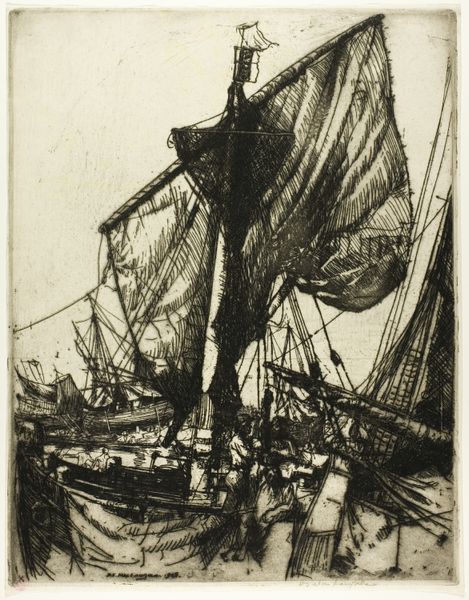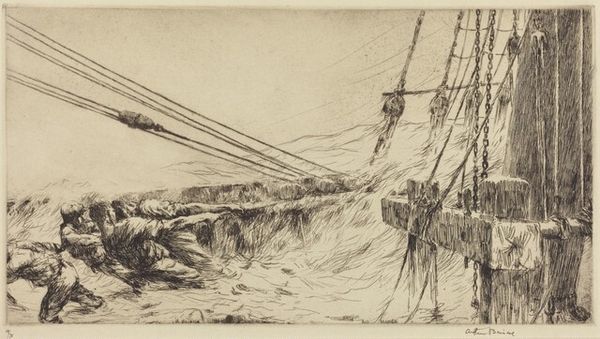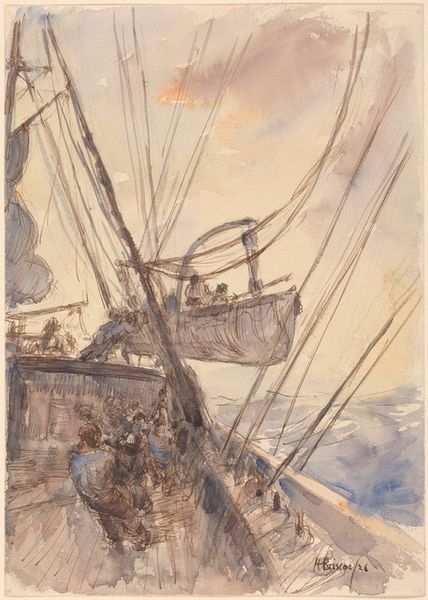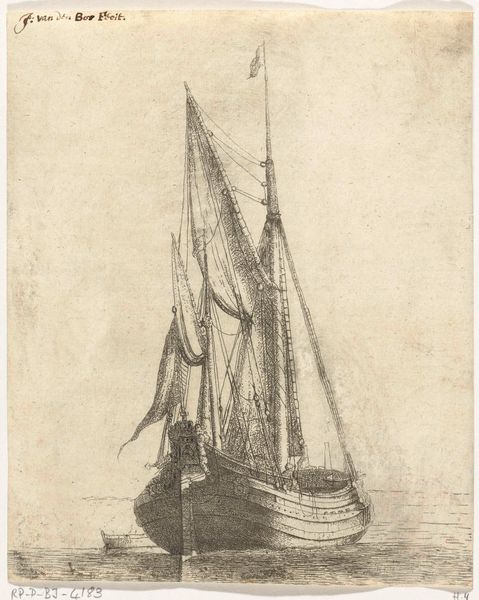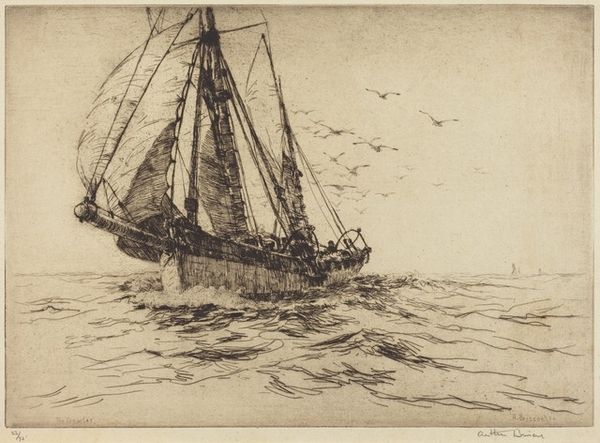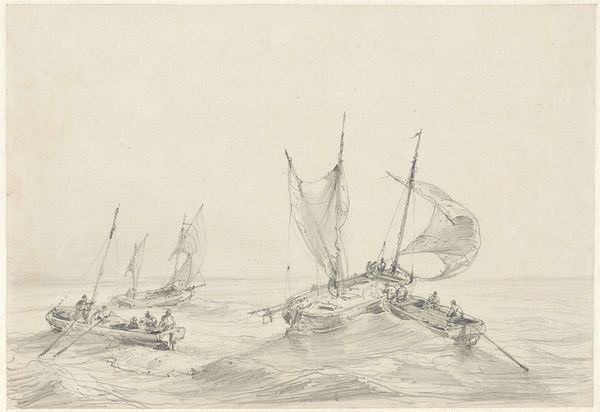
print, etching
#
ink drawing
#
narrative-art
# print
#
etching
#
line
Copyright: National Gallery of Art: CC0 1.0
Curator: Arthur Briscoe's etching from 1926, titled "Man Overboard," vividly captures a dramatic scene at sea. Editor: My first impression is one of impending chaos, a sense of urgent activity conveyed through those frantic, overlapping lines. Curator: Indeed, the artist masterfully utilizes line to create depth and movement. Observe the dense network of rigging converging toward the top of the image, contrasted with the relatively calmer, horizontal lines of the sea. The composition really traps your eye in a spatial matrix, doesn’t it? Editor: It does. I am also considering the etching’s socio-historical dimensions. Prints like this became increasingly popular in the early 20th century and were distributed by organizations, like the Royal Society of Painter-Printers, thereby providing an intimate view of labor and maritime culture accessible to wider audiences beyond the elite circles traditionally associated with art consumption. Curator: Good point, and it goes without saying that the human drama unfolds amidst a dynamic interplay of light and shadow. Look closely and the texture suggests both struggle and precariousness. Even the relatively open space toward the horizon amplifies this sensation. The artist is inviting you to feel how close one is to doom at any given moment! Editor: We cannot overlook the role the title plays in shaping our understanding, obviously. "Man Overboard" directs our attention not just to formal arrangement of lines, but also underscores themes of mortality and danger faced by maritime workers—reflecting prevalent concerns and sensibilities of its time. It seems fitting that it circulated fairly widely at the time. Curator: Yes, the scene unfolds organically through the deliberate deployment of stark linear effects to evoke a strong narrative, creating a unique artistic syntax and rhythm, while leaving much to our imagination. Editor: Thinking about the effect it had in the period, that seems fitting, given its wider role as social and political reportage of ordinary, yet often-overlooked activities and stories, available for mass consumption. Curator: In any case, Briscoe really showcases how formal decisions affect, determine and reflect artistic values! Editor: In the end, Arthur Briscoe provides more than a mere picture of an incident but rather invites contemplation regarding social truths regarding working class experiences and struggles.
Comments
No comments
Be the first to comment and join the conversation on the ultimate creative platform.
